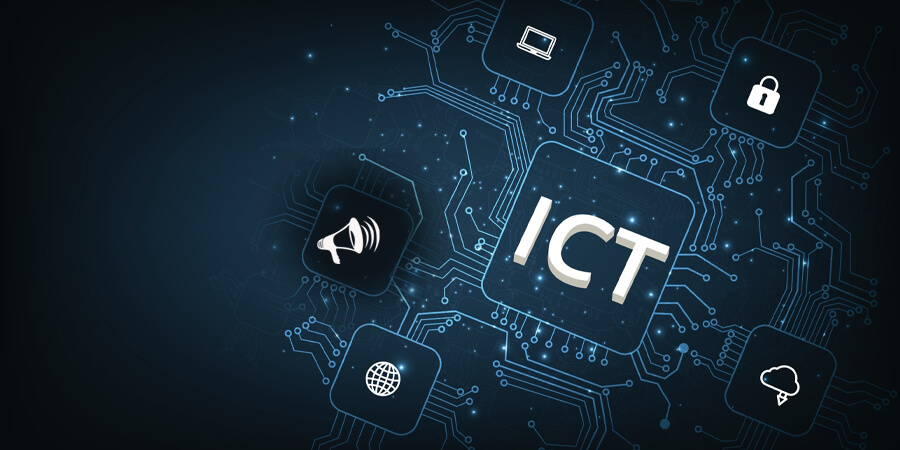ICT technologies have made tremendous progress in the last two decades, impacting the technological landscape like never before. The global ICT market was valued at US$341.64 billion in 2022 and has been projected to grow at a CAGR of 11.26% to reach $582.33 billion by 2027, according to GlobalData findings. Indeed, the digital transformation journey cannot be imagined without ICT’s role in the internal and external operations of modern businesses.
However, the story of ICT advancement is incomplete without the influence of media platforms that maintain the ebb and flow of information. This keeps the industry relevant and interactive among the enterprise and consumer segments, providing enormous benefits to the ICT ecosystem as a whole. Moreover, nearly 100% of ICT companies are benefiting from social networking sites to grow their businesses and attract customers.
Processing the Progress
Taking a simple example from the popularity of the latest use case of artificial intelligence across sectors, it is interesting to see how decision-makers in companies have been able to understand the use of this new technology and adopt it for their operations. Market findings suggest that 35% of companies are already using AI in their businesses, and an additional 42% are exploring AI. Media platforms have been constantly working on providing bite-sized information to different categories of customers through the use of language, audio, visuals and physical engagement. They have also openly discussed these topics, and through such knowledge sharing, even non-tech CEOs can comprehend the workings of the technology and harness its potential. Within a span of less than a year, the global artificial intelligence market was valued at $150.2 billion in 2023 and is expected to grow at a CAGR of 36.8% from 2023 to 2030, according to MarketsandMarkets. This has been the case with all the emerging technologies that hit the market and ultimately to the customers.
Also read: Power on the Page: Why Internet Firms Must Rein In Their Content
Visual Impact
Complex technologies such as digital twins, network slicing and virtual and augmented reality are being discussed in the boardrooms of many companies. The imaginative efforts of computer programmers, concept creators, graphic designers, illustrators and video editors are crucial elements of such information dissemination. This creative process involves a significant amount of research, trial and error, and amendments before the fruits of this labor can be made available for public consumption. Due to these efforts, it has become commonplace to imagine these concepts in the context of applications and use cases for business operations. Such visualization helps people understand better. Similarly, these painstaking processes successfully bring the marketing materials of intangible digital products to consumers’ attention.
The Power of the Phygital
The effectiveness of human and technological collaboration was put to the test during the coronavirus pandemic in 2020. When the world was at the mercy of the COVID-19 virus, several countries conducted successful hybrid tech events, including the UAE. The use of ICT technologies such as video-conferencing and broadcasting brought the industry together through online forums to collaborate with investors, partners and other stakeholders. Even the signing of Memorandums of Understanding (MoUs) and mergers and acquisitions (M&As) took place during these events. Such activities were vitally important to keep both emotional morale and economic determination sparked in otherwise dour times. From this, and despite various logistical and organizational challenges, media platforms continue to conduct major ICT events that serve as a bridge between service providers, suppliers, system integrators and other stakeholders; these help to actualize mutually beneficial economic and financial goals.
Preparing the Recruits
The ICT industry is currently faced with crippling talent shortages. Without the preparation of skilled IT workers, the prospects for the industry could look bleak. However, ICT-focused media platforms are able to provide education/re-education to professionals and the general public through webinars, video tutorials and online courses. Millions of people across the globe are acquiring knowledge through these platforms and staying on track with the latest advances in the industry. These programs are instrumental in creating new job opportunities and upskilling the ICT workforce to be ready for them.
Also read: Deep Fakes: The Menace on the Prowl
Promoting Advocacy
In a dynamic ICT industry, advocacy strategies play a key role in influencing government policies and regulations that impact the industry. Company press releases, key announcements and legal and financial transparency become important aspects of gaining support and raising awareness about important issues. The media plays an important and responsible role in forging the path toward the intended destination. Especially, in the age of generative AI with rampant content generation, the media plays a responsible role in verifying the authenticity of the intended message so that disinformation and misinformation are kept at well at bay.
In conclusion, communication technologies enable businesses to coordinate with internal and external stakeholders — access that is critical for their continued and successful existence. The ICT industry is central to this interoperability, and the media industry is the catalyst enabling the industry’s seamless operations in an increasingly volatile digital economy.









